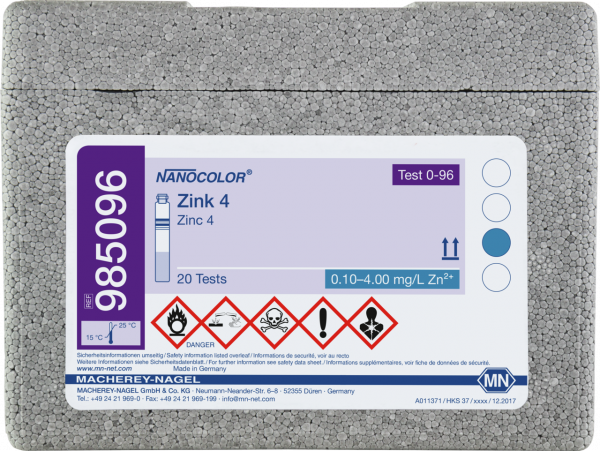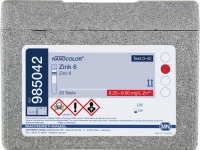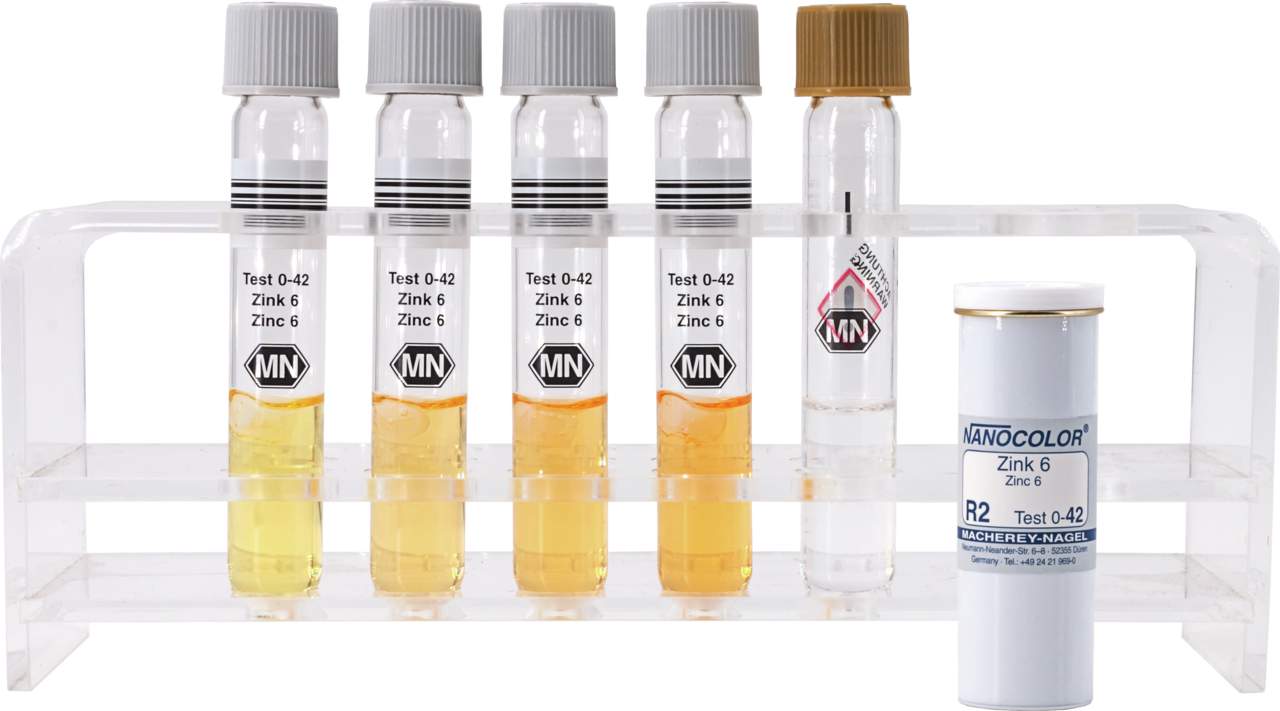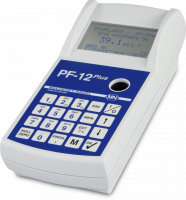Tube test NANOCOLOR Zink 4
*taxes and shipping not included
Delivery time approx. 5 working days
Tube test for the determination of Zinc. Precise rapid tests for all kind of water and waste water samples. Time-saving and reliable analysis together with our NANOCOLOR photometers.
| Brand | NANOCOLOR |
| Platform | NANOCOLOR tube tests |
| Parameter | Zinc |
| Measuring range | Zinc - 0.10–4.00 mg/L Zn²⁺ |
| Sludge reagent set | No |
| Test No. | 0-96 |
| Evaluable on | 500 D, Advance, MT Easy UV, MT Easy VIS, PF-12Plus, UV/VIS II, VIS II |
| Based on norm | Analogous APHA 3500-Zn F |
| Method | Zinc - Zincon |
| NanOx N | No |
| NanOx Metal | Yes |
| Crack-Set | Yes |
| Sea water analysis | Yes |
| Remark | Measuring range on NANOCOLOR VIS II |
| Shelf life (from production) | 1 Year(s) |
| Storage temperature | 15–25 °C / 59–77 °F |
| Scope of delivery | Rugged box with 20 test tubes. Sufficient for 20 tests. |
| Gross weight (incl. packaging) | 329 g / 0.73 lbs |
| Packaging dimensions | 160 x 110 x 119 mm / 6.30 x 4.33 x 4.69 Inch |
| Hazardous material | Yes |
- Download Instruction / Anleitung / Manuel
- Download Pictogram / Piktogramm / Pictogramme
- Download Validation data / Validierungsdaten / Données de validation
- Download Betriebsanweisung (DE)
- Download Flyer NANOCOLOR analysis system (EN)
- Download Flyer Das NANOCOLOR Analysensystem (DE)
- Download Flyer Système d’analyse NANOCOLOR (FR)
Zinc
Reaction basis
When carrying out the APHA 3500 Zn-F compliant test (REF 985096), Zincon forms a blue color complex with zinc in an alkaline environment, which can be evaluated at 620 nm, the test turns brownish. The also offered Zinc 6 tube test (REF 985042) test is based on a complex formation of 4- (2-pyridylazo) resorcinol with zinc. This test is evaluated by a double determination at 470 and 490 nm.
Fig. 1: Reaction principle in accordance to the APHA conform Zinc determination with Zincon and the reaction principle based on the formation 4-(2-pyridylazo)resorcinol with zinc.
Sample preservation
After adjusting the pH value to 1–2 with nitric acid, the sample can be preserved for storage for up to 1 month (storage vessel: PE or glass bottle).
Tips & tricks
Decomposition
For the determination of total zinc, decomposition with NANOCOLOR NanOx Metal (REF 918 978) or the crack set (REF 918 08) must be performed prior to analysis. Generally a decomposed blank value should be used as reference.
Common sources of error
When using VISOCOLOR ECO Zinc, attention must be paid to the different sample volumes for visual evaluation (1 mL) and photometric evaluation (5 mL).
Sea water suitability
After dilution (VISOCOLOR ECO Zinc 1+9, NANOCOLOR Zinc 4 1+1, NANOCOLOR Zinc 1+9), the method can also be used for analysis of sea water.
pH
The pH value of the sample solution of 3–10 stated in the instruction leaflets must be complied with. If necessary, adjust the pH with nitric acid or sodium hydroxide.
For acidic, alkaline and buffered samples, measure pH after adding the sample (target: pH 8.5–9.5) and adjust to pH 9 if necessary.
Interferences
Calcium interferes with the detection. For disturbance suppression, use the reagent for lime precipitation (up to 20 g/L Ca2+, REF 918939).
Further interfering ions are listed in the instruction leaflets.
Turbidity
Turbid solutions must be filtered prior to the determination of dissolved zinc; turbidity leads to incorrect results: For coarsely dispersed turbidities, use qualitative filter paper (e.g. MN 615), for moderately dispersed turbidities, use glass-fiber paper (e.g. MN 85/70 BF) or membrane filtration set GF/PET 0.45 µm, for finely dispersed turbidities, use membrane filtration kit 0.45 µm or GF/PET 0.45 µm.
Fig. 2: Colorchanges of the MN Zinc tube tests depend on the Zn2+-concentration.
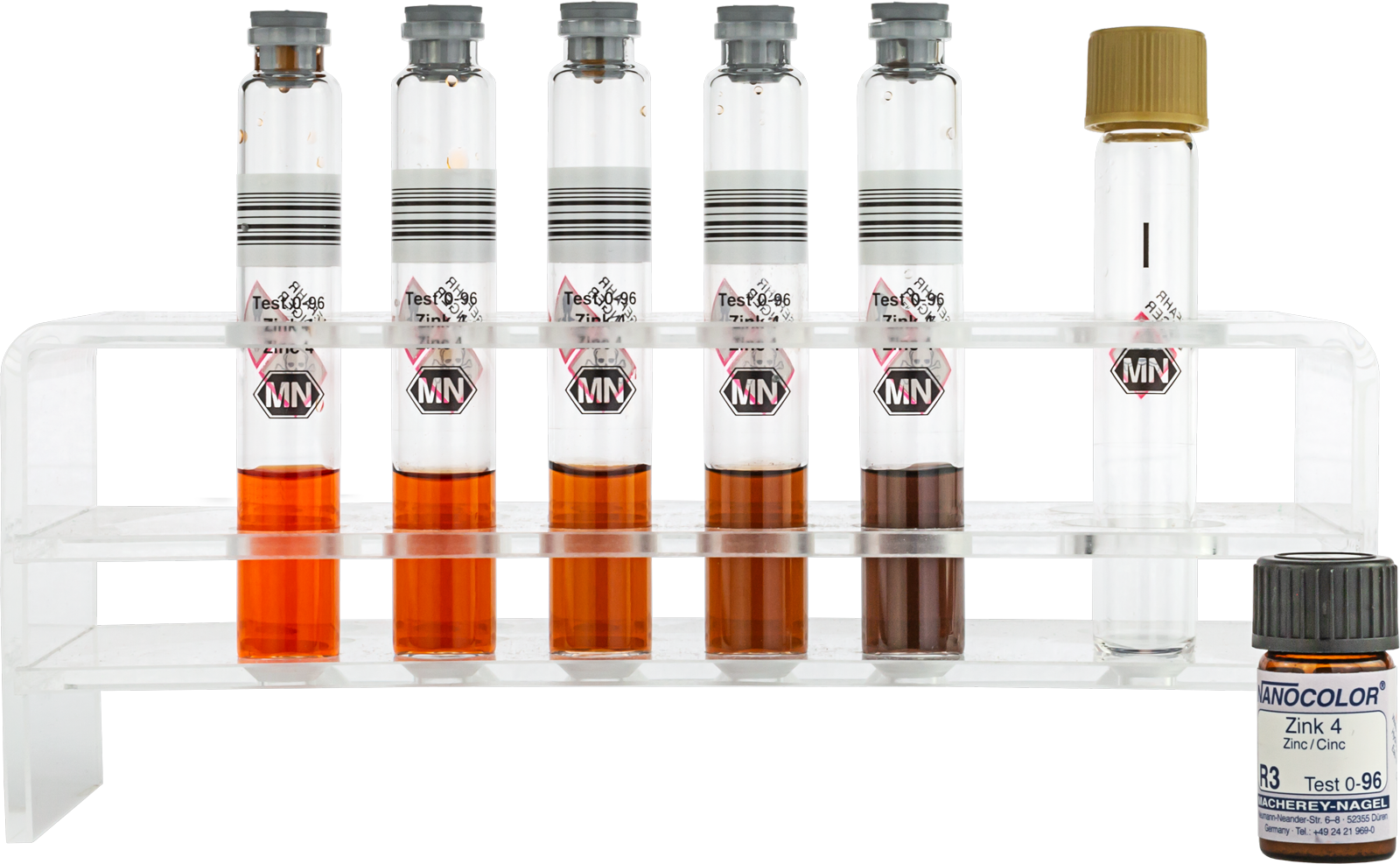
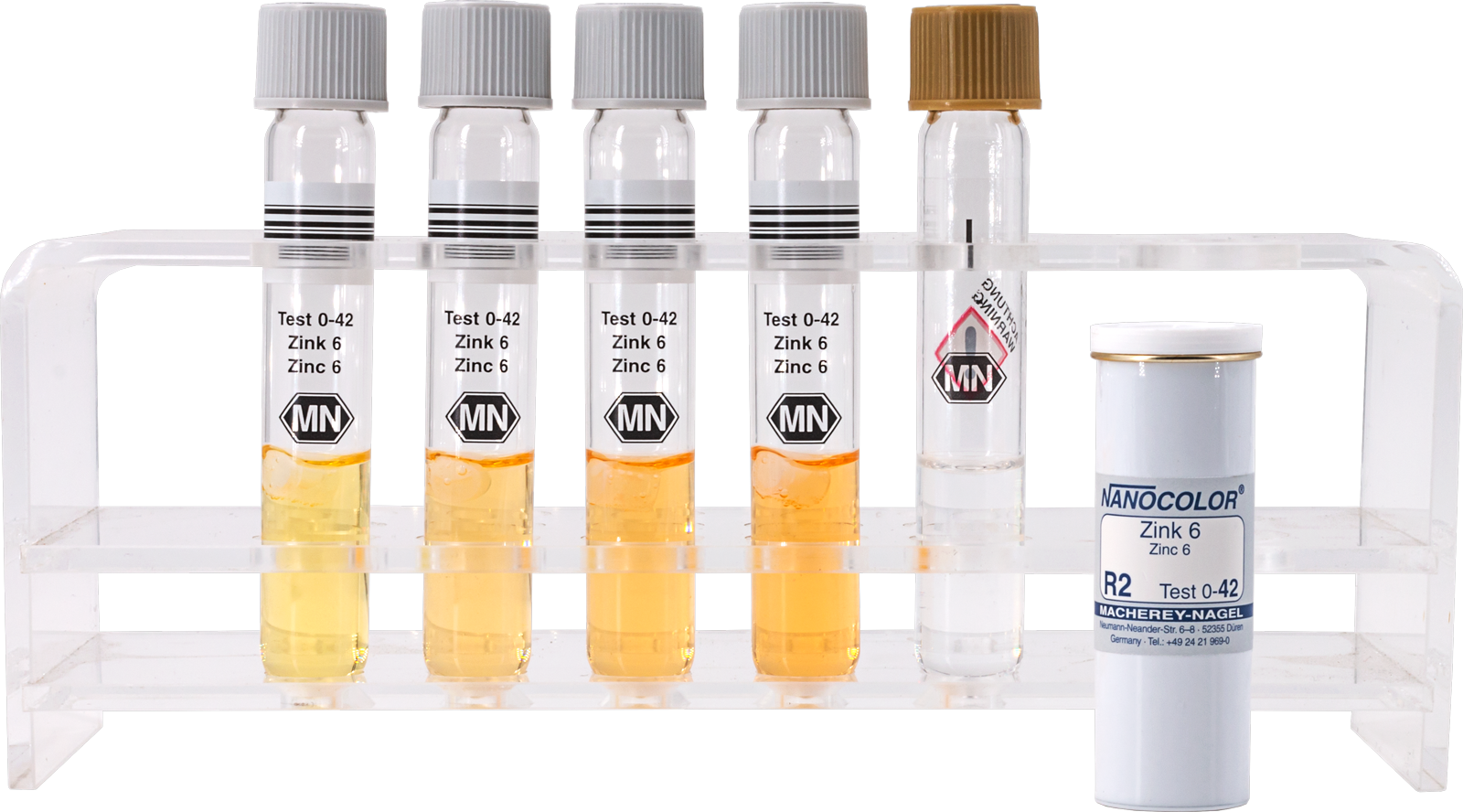
Zinc salts are used in electroplating for the galvanic zinc coating of steel in order to achieve an effective rust prevention. Also in cooling waters, zinc salts are applied as corrosion protection agents.



